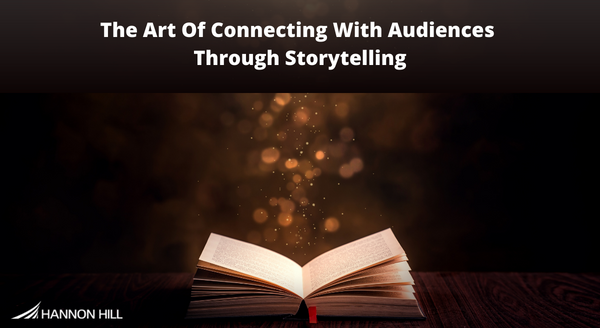
"Those who tell the stories rule the world." Native American Proverb
Stories and storytelling has been around since ancient times. Whether it's cavemen drawings on a wall, ancient Greek myths, Shakespeare's Sonnets, or Harry Potter adventures, stories are part of the human experience.
Stories educate, unite, give purpose, and connect. Stories are memorable and help convey complicated data and subject matter findings in an understandable way to less technical audiences. According to the American psychologist Jerome Bruner, when stories are used to communicate messages, the audience is 22 times more likely to remember the content of a given presentation.
Honest and authentic stories amplify empathy as oxytocin levels rise when we hear good stories, which leads us to care for and connect with a particular person or brand.
A Harvard Business Review article highlights the importance of the emotional connection between an organization and its clients. Not only does an emotional connection between a brand and client build trust and stand out from a saturated marketplace, but it also leads to recommendations and ambassadorship by constituents.
To tell a great story and connect with people, there are rules to be followed. Just as an architect starts with a foundation to erect a structure, storytellers must adhere to a certain process to transform a good idea into a great story.
When it comes to colleges and universities, it's important to segment one's audience. For higher education institutions, the most typical target audiences are prospective students, which include undergraduate, graduate, part-time, hybrid, online, international, or transfer students. Secondary audiences may include decision-makers and influencers such as parents, faculty, staff, alumni, donors, and members of the wider community.
Storytelling isn't a one-size fits all approach. The stories you tell should be appropriate to the stage of your relationship with the intended audience. Telling a story targeted at alumni will alienate prospective students, and a fundraising campaign story for donors might be irrelevant to parents of prospective students.
Now that you've established your audience, define the core message that you're trying to convey. Do you want to increase enrollment, attract new faculty or staff, raise funds for an upcoming expansion, or build a connection with surrounding communities? Try to come up with a core message surrounding your overall story in one sentence, like a foundation of a home, then structure your story around that core message.
So you know your audience and crafted your core message, what story are you trying to tell?
To increase enrollment, colleges are known to share student success or "where are they now" stories to showcase what's possible for individuals considering an institution if they were to enroll.
Telling stories about where alumni and donor money has been invested and how it improved the university and overall student success is a great way to spur emotion and motivate future giving and goodwill.
If you found the right audience and created a story that connected with the people you're trying to reach, you should have made a connection that will allow you to get one step closer to your desired outcome for your story.
Give your audience a call to action that will lead them to the final step in your storytelling process. Be that getting potential students to enroll, donors to donate, new talent applying for a position, or alumni sharing your story with their broader network.
Always leave them with a call to action.
We've all heard the saying, "if a tree falls in the forest and no one is there, does it still make a sound?"
The same goes for your stories. You may have drafted the most eloquently written plot ever told. You're ready to take your audience on a journey, motivate, inspire, and lead them to life-altering actions that will mutually benefit both them and your institution. But if you don't know where to reach them, your story will never be heard.
Therefore, choose your medium wisely and invest time during your audience research phase to determine where they typically consume content. Whether it’s through written format, videos, podcasts, or live speaking engagements, determine appropriate channels to publish your content to get the most reach and deliver the benefits your story offers.
Great stories build relationships and make people care about your organization. If done right, your stories will resonate with your audience, educate, unite, give purpose, and motivate them to take the next steps.
Every person and organization has a story that needs to be told. Your audience is waiting for you to share it because:
"You may tell a tale that takes up residence in someone's soul, becomes their blood and self and purpose. That tale will move them and drive them, and who knows what they might do because of your words. That is your role, your gift." Erin Morgenstern
Last Updated: Nov 3, 2022 11:00 AM